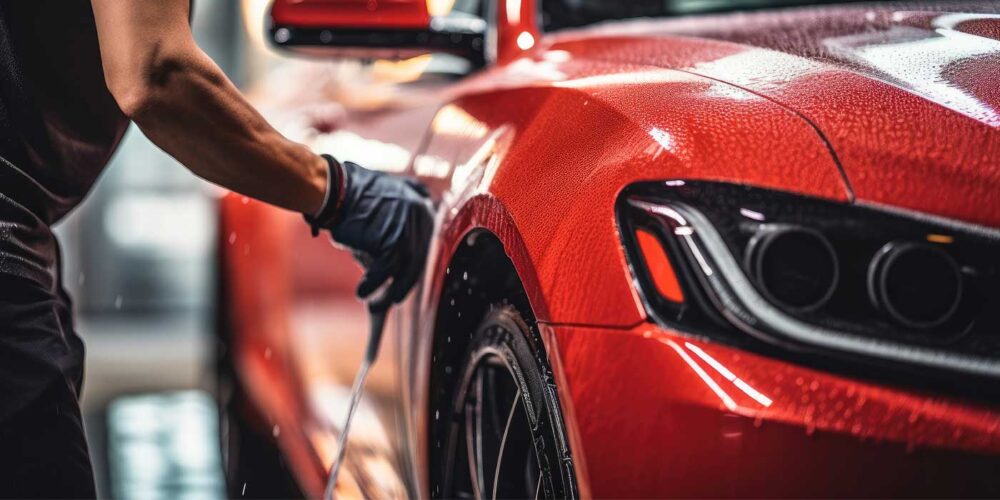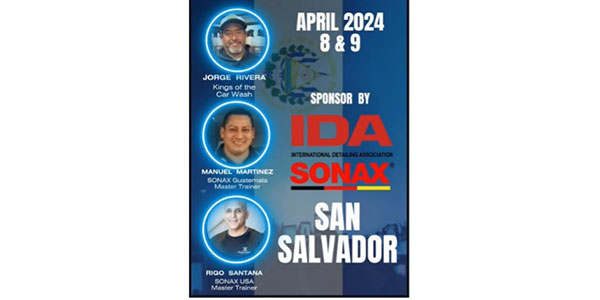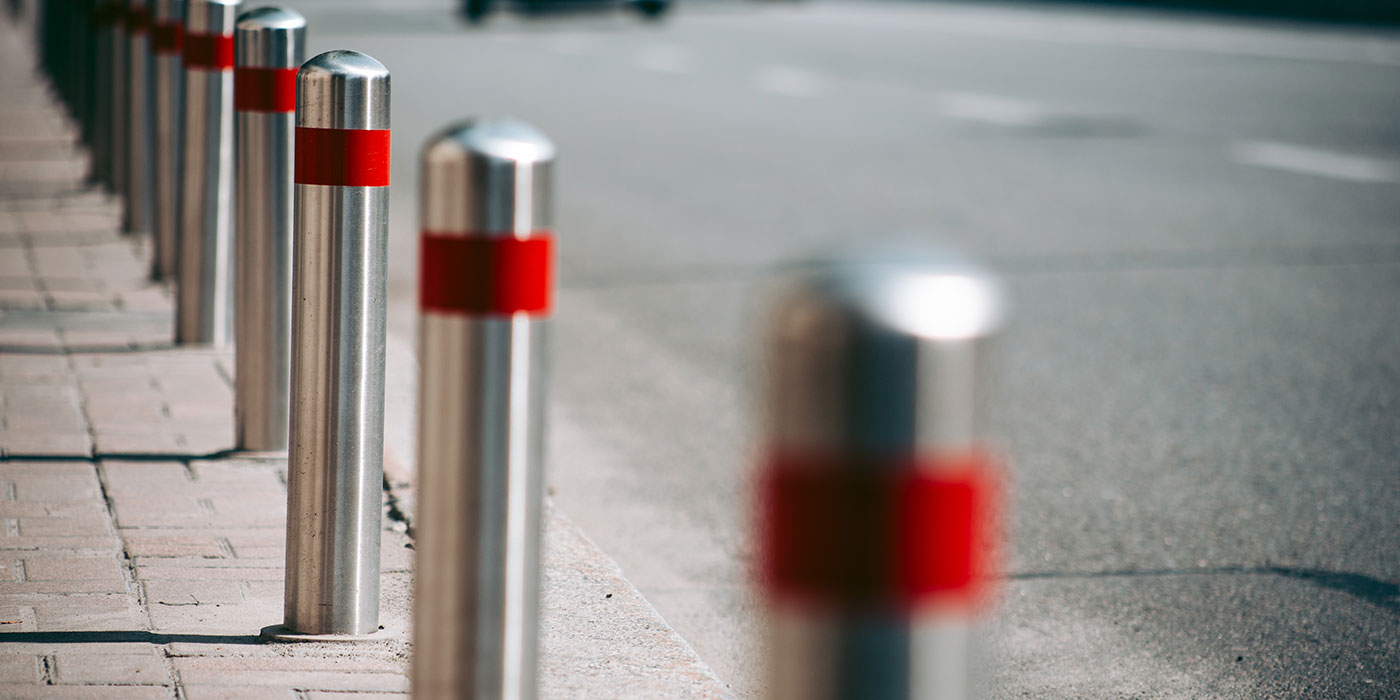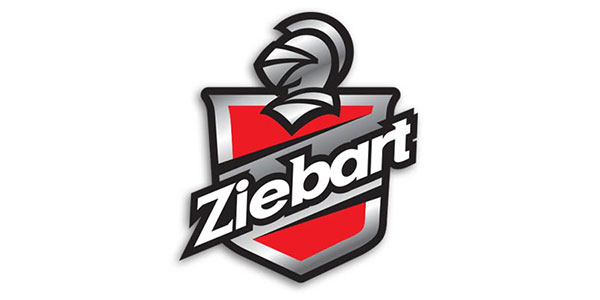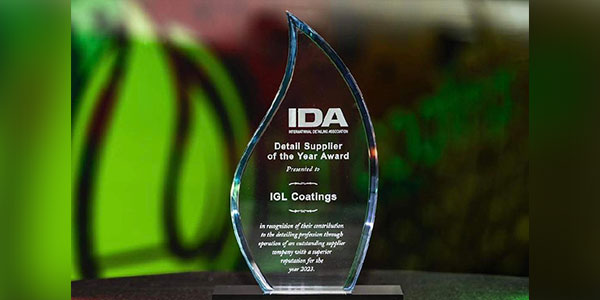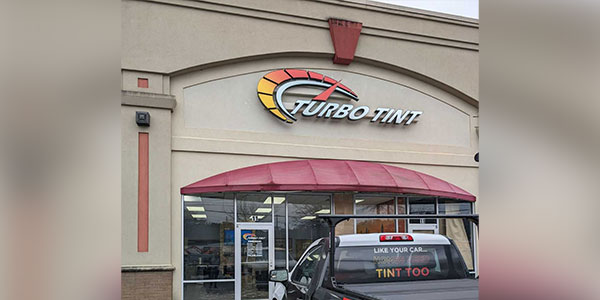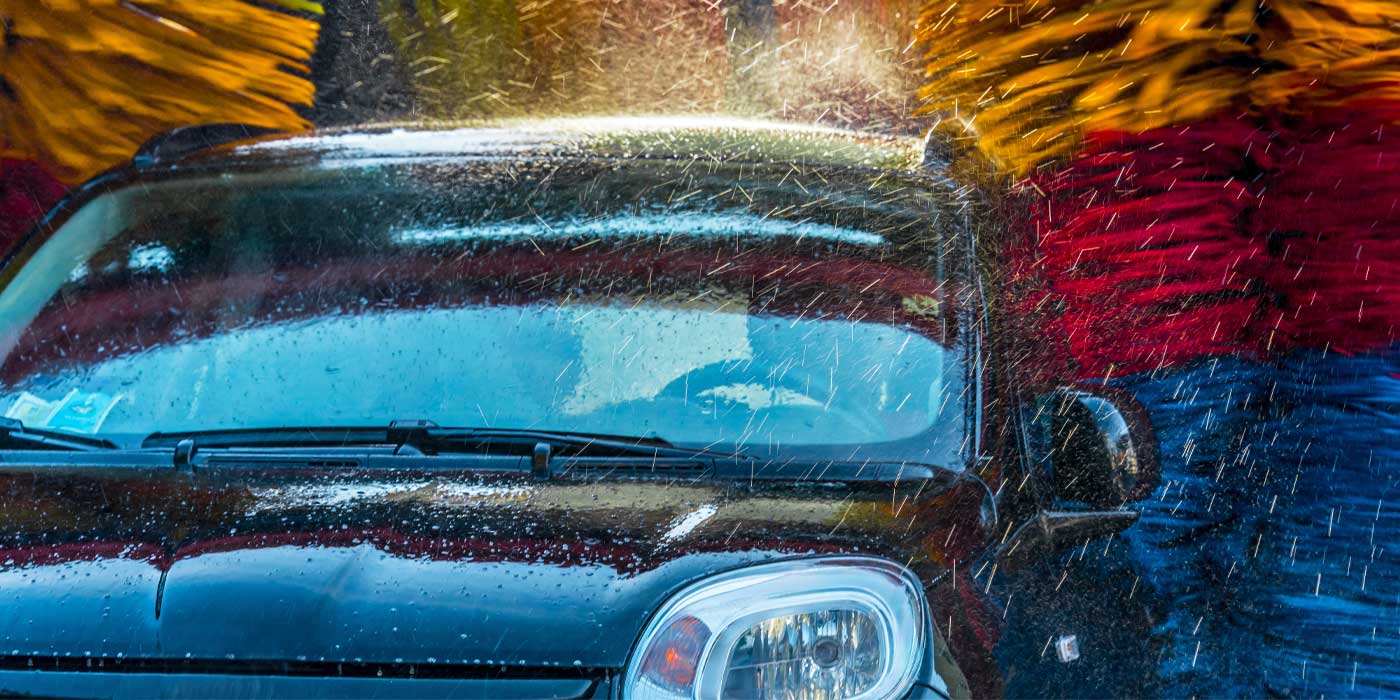To say detailers need to be cautious when dealing with a car’s paint finish is an understatement. It is a constant disappointment to me when I visit detail operations around the country and the world to see how they are correcting, polishing or protecting paint finishes. In many cases it is downright frightening when you consider the cost of a paint finish on a Mercedes, BMW, Porsche or most luxury and exotic vehicles could cost as much as 10% of the vehicle’s value or more.
Absentee owners
If you are an absentee owner of a detail shop or a carwash operator who does not oversee the detail department, it behooves you to find out what is going on in your detail operation. Even most auto dealers are totally ignorant of what goes on in their detail departments.
For example, a mega-dealer I visited had a detail department that serviced five dealerships for new car “get ready” and used car detailing. The shop was typically disorganized and I noted that it had as many different paint finish procedures as there were detailers.
The differences were not only in the chemicals used, but also the tools and pads used. However, the disconcerting thing was many of the detailers had been working there for a number of years, yet few, if any, had any idea of the real purpose and capability of the chemicals they used and worse, they did not understand how to use the various tools and pads.
Instead, they did what was simply the easiest or fastest for them or what they had been doing at the last detail business they worked for.
Think about it. Doesn’t that frighten you? To think a business might be responsible for $50,000 to $60,000 worth of paint finishes a day and the people working on them do not really know what they are doing should alarm most owners.
With all due respect to most “detailers,” when was the last time most of them had any training or even had any initial training? Have they read up on clear-coat paint finishes? Do they know what they are and how to restore and protect them?
These comments are also directed at detailers who are owner/operators and carwash operators with a detail department. What have you done to increase your and your employees’ knowledge of paint finishes, chemicals, paint finish tools and pads?
In my various travels, I have been constantly amazed at how unaware detailers are of new technology.
For example, the various foam pads as well as flat, waffled and microfiber pad options that are available. Also, many don’t know how the density of foam affects the paint finish, rather than guessing which pad to use based on its color.
Many are also not using the newest dual-action polishers from Italy and Germany because they have never seen them or because they don’t understand the equipment or feel they are too expensive. Knowledgeable detailers know that these tools were engineered for the clear-coat paint finishes that tended to swirl when a woven wool pad was used on them.
Old technology
Many detailers today are working on the new paint finishes in the same way an auto mechanic would try to tune-up a modern engine without a computerized engine analyzer. It cannot be done, but they keep trying. So, what’s the answer?
Education, Training, Commitment. A willingness and desire to learn. Never in the history of the detail industry has there been more professional information available to the detailer. The information is out there if you take the time to search it out and use it.
Most of the major equipment and chemical companies are more than willing to provide information and answers if you are willing to ask and, more importantly, listen.
Summary course
To give you your first summary lesson, the remainder of this two-part article will cover:
• Types of paint finishes
• Types of polishing tools
• Types of pads
• Types of chemicals.
Keep in mind this is only a summary and should serve only as a beginning for you. The next step is yours. To study further, you need to buy new tools, pads and chemicals. And then experiment on old cars, junkyard fenders, hoods, etc.
Paint finishes
Single-stage enamels and lacquers
For all intents and purposes these have been the most common paint finishes that the detail industry dealt with until the advent of clear-coat paint finishes. Single-stage enamels and lacquers can be plain or acrylic. The only difference is that with acrylic added to the paint, they dry faster and harder.
Both types have pigment and resins in the paint that are exposed to the sun’s ultraviolet rays and as such will oxidize and become chalky. They will discolor from industrial pollutants. They will spot and etch from acid rain. They will show orange peel.
The good news is that they are easier to finish as there is usually significantly more paint film on the vehicle surface, as much as 4 to 5 mil. With the exception of metallics, all of the aforementioned problems can be corrected or at least improved upon if the proper chemicals, tools and pads are used by a competent detail technician.1
An OEM-applied lacquer or enamel would have 4 to 5 mils applied to the surface, including primer.
Base-coat clear-coats
These are simply two-stage paint finishes that are a base-coat or color-coat and the clear-coat that provides the shine and protection. In recent years, in an effort to create exciting new colors and effects, auto manufacturers have worked with paint companies to develop both tri-coats and tinted clears.
With a simple clear-coat, there is a color-coat covered by a clear-coat.
With a tri-coat you have the color-coat, then a translucent-coat and then the clear-coat to create a pearl-like finish.
The tinted clear is created when the clear-coat has been tinted with the same color as the color-coat. This allows the finish to take on an appearance totally different from the standard base-coat clear-coat finish.
The benefits promoted by the auto manufacturers are that a clear-coat will not oxidize. They provide a higher shine and since the color-coat is protected from the sun’s UV rays, you do not have the traditional oxidation that can occur with a single-stage paint.
But clears, especially in hot sun areas like Southern California, Florida, Arizona and Hawaii, will haze. Plus, they are also vulnerable to acid rain etching, bird dropping etching, water spotting, etc. The clears are more difficult to correct with these problems because there is so little clear film on the vehicle surface (about 1.5 mils).
Let’s stop here and talk reality. The OEMs, as we know, are not usually altruistic and looking out for the motorist. This is the case with clear-coats. While the first two points are true, it should be mentioned that clear-coats are also much less costly to apply than single-stage paint finishes. Why? Because the cost of paint is in the pigments, resins and metallic. With a base-coat protected by a clear-coat, the OEM applies much less expensive pigmented paint film on the vehicle, saving millions of dollars a year.
A typical domestic car will have 4 to 5 mils of paint film on the finish, which includes the e-coat, primer, base-coat and clear-coat; the typical Japanese or European vehicle might have slightly more. That is why a professional detail operation should have a paint thickness gauge to measure the film thickness on the vehicle.
And clear-coat finishes have their own unique and troublesome problems for the owner, body shop and detailer.
In the first place, they need to be regularly waxed, sealed and protected. If they are not, they will scratch just like a piece of plexiglass or the plastic lens on your eyewear. And they are very susceptible to water spotting and etching from acid rain, bird droppings, bugs, etc., as mentioned.
In fact, most of these can permanently damage the clear-coat to a point that an acceptable repair is not possible. That is why you need to be able to tell the customer you may not be able to provide a 100% correction.
Frankly speaking, the best waxes or sealants can only provide temporary protection, whereas a ceramic coating can offer up to one to two years protection. The acid in rain, bugs and bird droppings will penetrate the wax, sealant and clear-coat, if not removed immediately.
After discussing the tools, pads and chemicals, we will end the article with some ideas on how to restore and protect these three paint finishes in part two.
Tools
The tools available to protect and restore the various paint finishes fall into the basic categories of electric and pneumatic. Which you use is a matter of choice, but the auto service industry in general, including body shops, repair shops, tire stores, etc., all use pneumatic.
The advantages of pneumatic is that they are lighter weight, offer longer life, result in lower operational cost, and also feature RPM regulation and variable speed. The only advantage of electrical, in my opinion, is price. In an effort to compete with pneumatic, they are now available with variable speeds at a higher price.
Rotary buffer
Pneumatic or electric, the purpose of the rotary buffer is to rotate at a high speed — usually from 1800 to 4500 RPM — which creates friction and heat. Once the paint surface is heated, you can either correct the surface irregularity and/or create a high shine using the appropriate pad and chemical. It must be understood that severe paint finish problems will require the use of a high-speed buffer.
Even clear-coats with severe etching or scratches will require the use of a buffer to properly correct the problem. The danger of a high-speed buffer/polisher is being in the hands of unskilled techs because, in addition to not understanding its use, he or she will generally use the wrong pad and/or chemical for the problem to be corrected, causing even more problems. Never use a high-speed buffer/polisher on a clear-coat/base-coat paint finish of 3 mils or less because you are dealing with a dangerously thin clear-coat, which initially is only 1.5 mils. A garbage bag is .95 mils to give you an idea of clear-coat thickness.
Wide swing and gear-driven dual action buffer/polishers
The most popular of these tools are from Italy (26 mm swing) and Germany (gear-driven). These have only been on the market for about 20 years and are the answer for correcting clear-coat/base-coat finishes without the resultant swirls and holograms that are difficult to prevent with a rotary buffer, especially in the hands of an inexperienced user.
These new tools are not without danger if the incorrect buffing pad and chemical are used. It is very important that anyone attempting paint correction be able to identify the paint finish and to diagnose the problem as well as know the differences in pads and correcting chemicals.
Note: There are some very good and less expensive Chinese copies of the Italian and German electric tools. In most cases, any tool being advertised as a wide-swing or gear-driven dual action buffer/polisher is from China.
Dual action polishers
Do not confuse these polishers with the European-made tools with a wider swing and gear-driven mechanism. They do not function in the same way and, for all intents and purposes, should be used for polishing not correction.
Orbital waxers
Technically speaking, an orbital tool, electric or pneumatic, cannot be called a buffer or polisher since it does not revolve in a rotating motion that creates the friction and heat generated by a rotary tool — or the new European-made dual action tools mentioned above.
The orbital duplicates the hand motion that would apply and remove wax or sealant. With some good paint finishes it is possible to use an orbital as a first step to chemically clean the finish with and then apply the wax or sealant — which one you do depends on the paint finish.
The orbital is becoming an essential tool in a detail business, especially with clear-coat finishes that often do not require use of the high-speed buffer/polisher. Orbitals are available as electric or pneumatic units. You can purchase an orbital attachment and drive pad that attaches to either an electric or pneumatic tool, which makes your rotary buffer an orbital.
The newest and most exciting innovation in orbital technology is the hand-held pneumatic mini orbital waxer that weighs less than 3 pounds. It can also double as a shampoo tool using a special backer plate and shampoo brush. With one of these tools, one person can apply wax or sealant to a standard passenger vehicle in about 5 minutes versus 20 to 30 minutes or more by hand.
In part two, we’ll focus on pads, bonnets and chemicals.
Sources:
1 Once single-stage metallics severely oxidize, it takes a very good technician with a few “insider” tricks to bring them back, even partially.
RL “Bud” Abraham has been in the carwash and detailing industries since 1969 and is considered one of the foremost experts in the field. He worked for several carwash manufacturers and started his own company, DETAIL PLUS, in 1986. He was the founder and first executive secretary of the International Detailing Association. Today, he offers consulting services on carwashing and/or detailing to operators and manufacturers. Contact Bud at [email protected].

